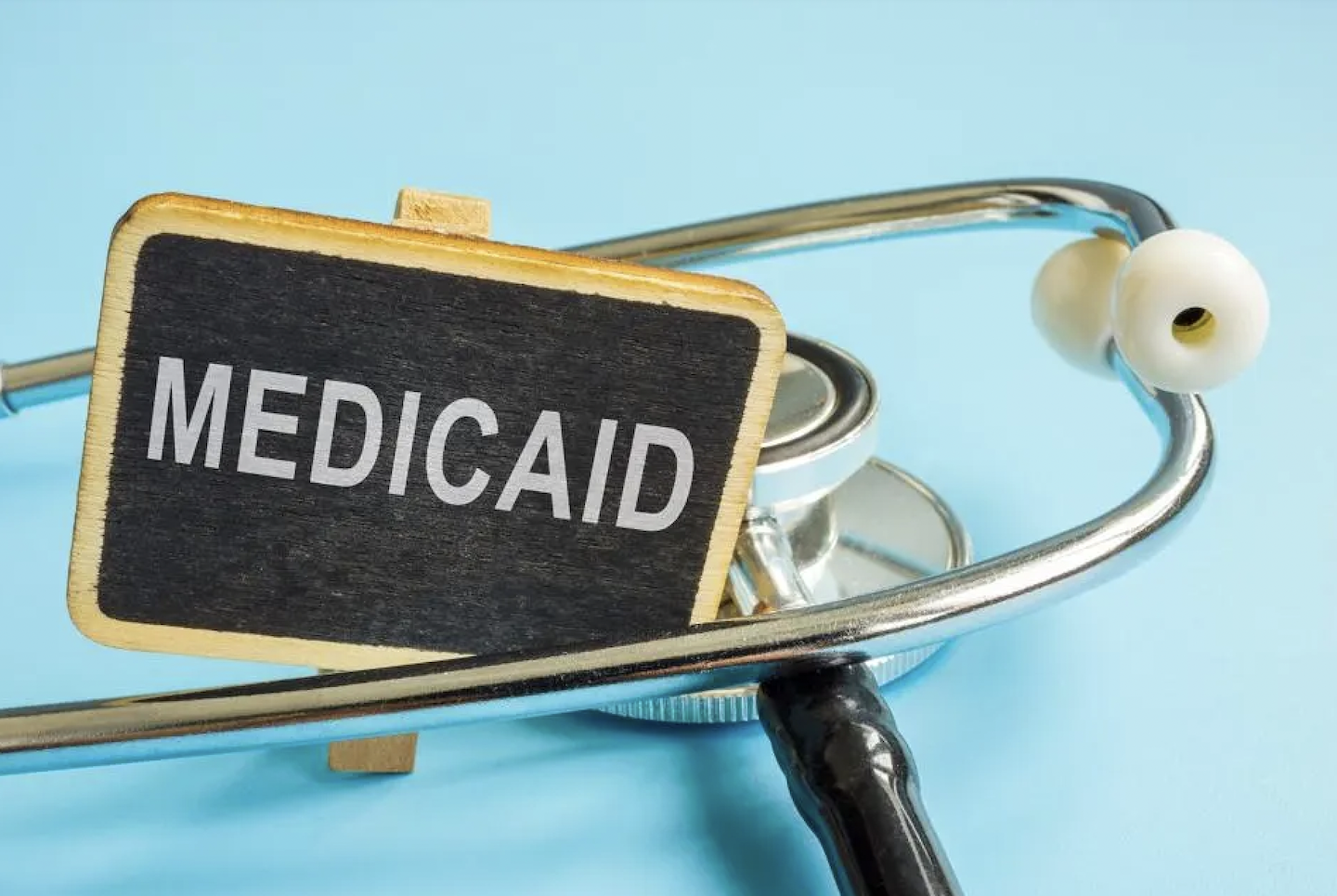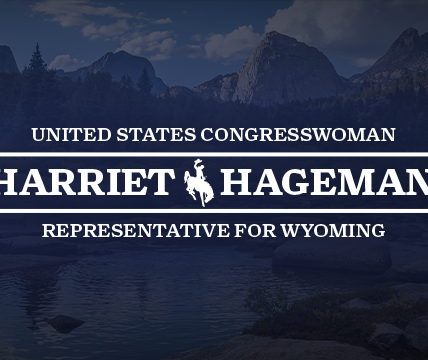Experts: Medicaid expansion critical to saving Wyoming’s health care industry

By Hannah Shields
Wyoming Tribune Eagle
Via- Wyoming News Exchange
CHEYENNE — Casper resident Angie Dax sat on the edge of her bed with a bottle of pills in her hand.
She resisted the urge to swallow the entire container. Her parents had just lost her brother, and she couldn’t bear the idea of them losing her, too.
“I just felt hopeless,” she said, “like I was tired of fighting.”
In 2020, Dax was diagnosed with pulmonary hypertension, a disease that affects the heart and lungs, making it difficult to breathe and perform daily tasks. She was forced to quit her job as a certified nursing assistant (CNA), where shifts often left her out of breath and in tears.
“I can’t even take the stairs or go do my grocery shopping,” Dax said. “It’s embarrassing.”
Medicaid denied her coverage because she made $600 too much as a CNA — it didn’t matter that she couldn’t work while she waited for her disability application to be approved. But if Dax neglected to get medical treatment, her disease would quickly turn lethal. She is one of 19,000 Wyomingites who would qualify for health insurance if the state passed Medicaid expansion.
Despite over 20 years of working in the health care industry, Dax said she was utterly shocked by the lack of empathy in her state’s health care system.
“People were very cold,” she said. “I felt so unimportant all of a sudden.”
Wyoming is one of 11 states without Medicaid expansion, leaving thousands of residents like Dax without coverage. As a result, the Equality State also has one of the highest uninsured rates in the country.
“This is a statistic I would not want to be dead last in,” said Kim Nei-Page, spokesperson for the American Cancer Society. “Especially if we’re trying to attract business to Wyoming.”
Three Wyoming hospitals have closed in the last seven years, and many others have had to cut services, such as OB-GYN and mental health beds, according to Wyoming Hospital Association Vice President Josh Hannes.
“We’ve missed a significant opportunity, and the benefits of expansion are pretty clear,” Hannes said, referring to when Medicaid expansion first became available under the 2010 Affordable Care Act.
Forty states have expanded Medicaid coverage since “Obamacare” passed, and the resulting health care policies, he said, speak for themselves.
Cancer, the second leading cause of death
Only one in 30 Wyomingites qualify for Medicaid, Nei-Page said.
This year alone, 3,320 Wyoming residents will be diagnosed with cancer, and many of them will be without health insurance.
The largest determining factor for cancer survivorship is coverage for the necessary treatment. Wyomingites in the Medicaid gap won’t know they have cancer until it becomes a life-threatening emergency.
It’s for these reasons that Medicaid expansion is an absolute must-have in Wyoming, Nei-Page said, “so that we can have more favorable outcomes for cancer patients in that gap.”
“People should not be dying because of where they live,” she said. “Closing this coverage gap in Wyoming will most definitely promote earlier cancer detection and fewer deaths, and improve the outcomes for cancer patients.”
Montana expanded its Medicaid program in 2015, which played a “critical role in supporting the state’s tribal and rural communities,” according to a January 2023 report.
More than 5,500 Medicaid expansion enrollees there were screened for breast cancer in 2021, resulting in 81 diagnoses. There were also 2,785 colon cancer screenings in 2021 under Montana’s Medicaid expansion, which resulted in nearly 1,000 potentially averted cases of cancer.
These annual check-ups are critical to catching and treating the early stages of cancer or diabetes, said North Big Horn Hospital District CEO Eric Connell, but most people won’t seek medical attention until it becomes a life-threatening emergency.
Connell said 15% of the Lovell hospital’s patients are uninsured. Uncompensated care is used to pay for the treatment of uninsured patients, often made up through commercial insurance agreements or the hospital’s mill levy.
However, he said, this pulls from available funding to replace broken or outdated medical equipment, maintenance costs, staff training, wages and so on. Inflated medical costs and low reimbursement rates further limit hospital resources.
“Our system is broken,” Connell said. “Everything costs too much, including health care.”
Stakeholders have rallied lawmakers for the past decade to expand Wyoming’s Medicaid coverage up to the 138% of federal poverty level. Nei-Page said they gain “more and more momentum” with each passing year.
“We need to get it over the finish line,” Nei-Page said. “People are counting on lawmakers.”
Although no Medicaid expansion bills were brought forward for consideration during this year’s budget session, it may be a topic again in the 2025 general session.
Rural hospitals are struggling
The two biggest obstacles faced by Wyoming’s hospitals are recruitment and reimbursement. Connell said the current medical community is retiring, and there aren’t enough young workers coming in to replace older workers.
At NBHHD, there are a number of providers who are within five to 10 years of retirement, he said — finding the next generation of nurses and doctors in Wyoming is a “big risk for our organization in the future.” It took his hospital district 18 months to hire just one ER physician.
“It takes a lot of patience and a lot of luck to find people,” Connell said.
Healthy Wyoming board member Jan Cartwright said the “key question” is how Medicaid expansion would bring more primary care providers to the state. Primary care doctors who just graduated from college, she said, consider a number of factors in their job search, and Medicaid expansion is often one of them.
Wyoming is partnered with the University of Washington School of Medicine through a program called WWAMI, an acronym that names each state that participates: Washington, Wyoming, Alaska, Montana and Idaho. This partnership creates a path to medicine for the next generation of Wyoming physicians.
However, WWAMI students have voiced their concerns about returning to work in their home state without Medicaid expansion. An additional 1,900 jobs would be created under Medicaid expansion with an increase of $1.5 billion to the state’s economy, according to a 2021 report published by The Commonwealth Fund. NBHHD and other hospitals in Wyoming have resorted to paying for out-of-state physicians, doctors and travel nurses, which are costly and putting hospitals “in the red,” hospital officials said. Washakie County Hospital Board member Phyllis Roseberry testified before the Legislature’s Joint Appropriations Committee in January, saying her hospital is in severe debt as a result of paying for travel nurses.
Uncompensated care costs Wyoming hospitals over $120 million a year statewide. Nei-Page said Medicaid expansion would be a game changer to help rural hospitals stay open, and the reason is simple — it gives patients a way to pay for care.
Montana saw an 11% decline in emergency room visits by Medicaid expansion enrollees between the first and second year of the program. The report attributed this to enrollees who gained access to primary care and specialist services, and were able to better manage their health.
A large economic driver in Wyoming
A 2023 report by the Wyoming Department of Health said there are “strong” incentives for Medicaid expansion.
The federal government will match 90% of expansion expenditures with federal funds. Section 9814 of the American Rescue Plan Act (ARPA) sweetens the deal by providing a temporary eight-quarter increase of five percentage points in the Federal Medicaid Assistance Percentage for traditional Wyoming Medicaid clients.
WDH policy and research analysts estimated the gross value of this ARPA incentive would amount to approximately $54 million for one biennium.
The WDH report estimated 19,000 Wyomingites would qualify for Medicaid expansion within the first two years. Experts speculate the least healthy people who need it most will be the first to sign up, costing approximately $199 million in medical and administrative costs. After two years, though, health costs to the state would plateau.
The more people who enroll into Medicaid expansion, the lower per-member, per-month (PMPM) costs will be to the state.
“Medicaid is insurance, and giving more people insurance just brings the cost down to everybody,” Cartwright said. “I don’t want to make it too simple, but, at the end of the day, that’s kind of what it is.”
However, Medicaid expansion has long been a point of political contention in the Wyoming Legislature. Both Cartwright and Hannes said arguments against the expansion have been completely without a basis in fact.
“You’ll hear conversations about how it’s a budget buster for the states that have expanded. That’s just factually untrue,” Hannes said.
Wyoming’s health care industry is one of the Cowboy State’s largest economic drivers. Hospitals and nursing homes contributed nearly $2.6 billion to the state’s economy, according to a report conducted by the University of Wyoming Center for Business and Economic Analysis in 2022.
Hospitals and nursing homes are also one of the Cowboy State’s largest employers. The report showed that 68 hospitals and nursing homes supported 32,000 jobs, with a total employee compensation of just over $1 billion annually.
These entities create more than $79 million in state tax revenue, and approximately $520 million in county, state and federal taxes combined.
“When you remove this investment from our facilities,” Hannes said, “you lose that larger benefit that spreads across the whole state and touches a number of parts of our economy.”
Medicaid expansion won’t be studied during this year’s interim session, but that doesn’t mean it can’t be brought up as an independently sponsored bill. Rep. Dan Zwonitzer, R-Cheyenne, who chairs the Legislature’s Joint Labor, Health and Social Services Committee, said this topic won’t go away anytime soon.
“Whether we have an interim study on it again, or someone brings it as a bill, I would be surprised if it doesn’t show up somewhere (in the) 2025 general session,” Zwonitzer said. “I don’t think the issue’s going away.”





